UPDATE 13.01.2024: Here’s the full guide of how to integrate the Inkbird IAM-T1 Air Quality Monitor in Home Assistant via ESPHome.
Intro
Whenever I see e-ink on a product’s spec sheet or listing, I get a little excited. Also known as e-paper, these types of displays are very low power and have excellent viewing angles and contrast without distortions. Great for indoor temperature & humidity sensors!
The Xiaomi LYWSD02 and Qingping CGG1 have been my daily climate sensors for years now, I capture their packets with a pair of ESP32 boards and proxy them to Home Assistant. They have incredibly high reporting rate and their button batteries last easily a full year.
In this article, I’m testing an air quality multi-sensor with an e-ink display by INKBIRD labelled model IAM-T1. This is a new product with a dedicated CO2 sensor which also measures temperature, humidity and atmospheric pressure. You can get the IAM-T1 on Amazon US, Amazon DE or Amazon UK.
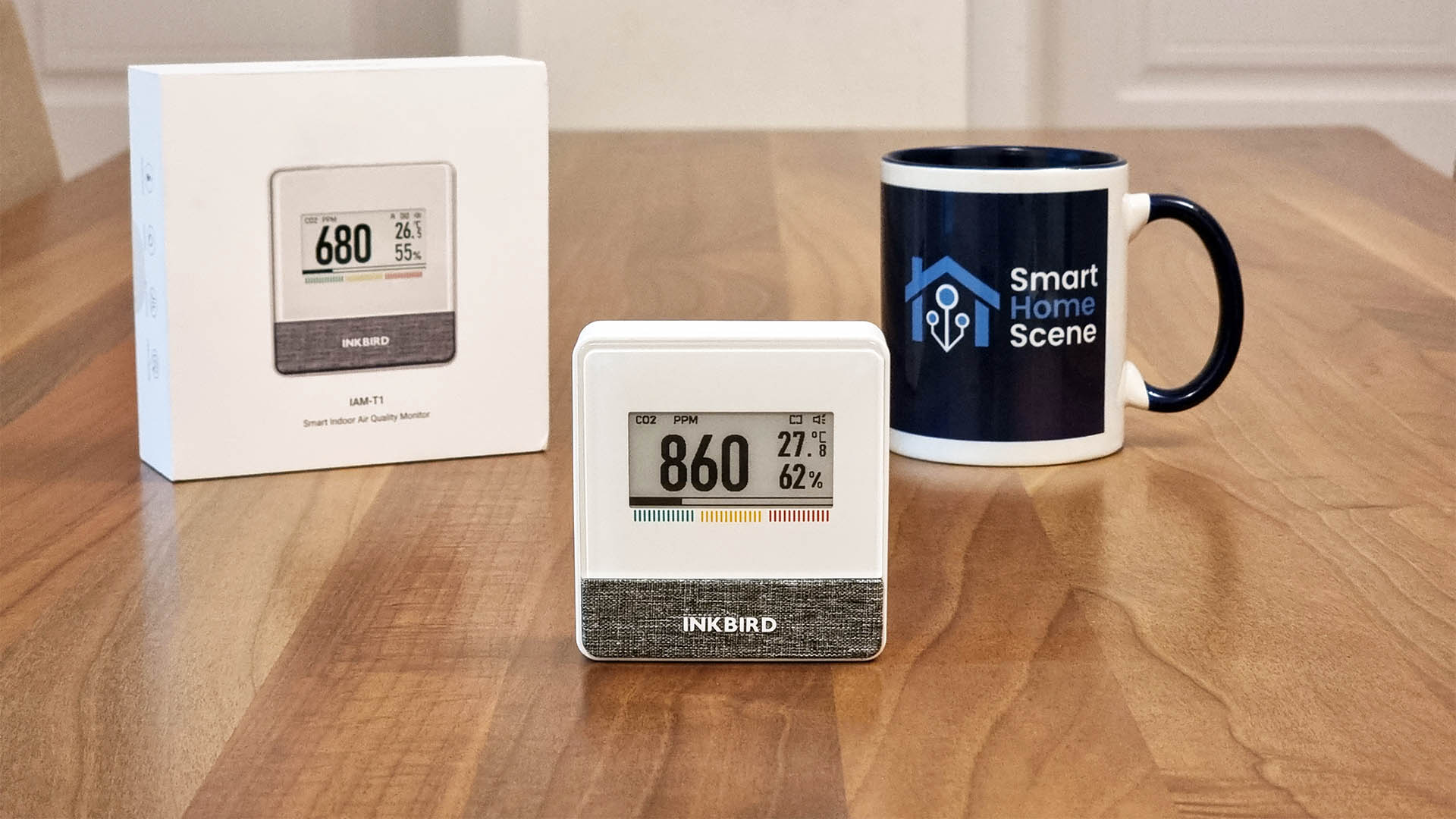
DISCLOUSURE: Following my recent review about Inkbirds IBS-P02R Pool Thermometer, the company contacted me and asked If could review their latest air quality sensor with an e-ink display labelled model IAM-T1. After they agreed upon my review guidelines, they sent me the device. This will in no way affect, sway of influence my opinion and is just my honest opinion as usual.
Features and Technical Specs
The INKBIRD IAM-T1 Air Quality Sensor is a Bluetooth 5.0 powered device with a dedicated next-gen Senseair CO2 sensor which also measures your room’s temperature and humidity. Its technical specification from the manual:
- Model: IAM-T1
- Power Source: 2xAA alkaline batteries
- Screen: Low Power E-ink
- Connectivity: Bluetooth 5.0
- Connectivity Range: 100m/327ft (open area)
- Reporting Interval: 1min (default), 2/5/10min
- Dimensions: 75x80x30mm
- Weight: 138g
There are some very interesting bullet points about the device in the user manual, per the company. First off, they claim a whopping 4 year battery life on a good set of AAs with a 10minute reporting interval. Decreasing this to 1/2/5minutes would naturally lower battery life.
Considering the small and low-power e-ink display, I have no reason to doubt this claim although I would hold some reservations on the 4 year number. INKBIRD further describes the screen as high-contrast, no dead-angle, 180° visual experience, which also proved to be correct from my experience with the device.
The IAM-T1 stores it’s measurements locally for up to 30days, it’s automatically transferred to the INKBIRD app whenever you are within it’s vicinity with your phone’s Bluetooth turned on.
Next Gen Senseair Sensor
The actual CO2 sensor powering the IAM-T1 is a next-generation model by Senseair called Sunrise HVAC. Senseair is a widely known for the their high quality NDIR sensors among the smart home community, especially for the S8 Model [Datasheet] a device used in many brand and DIY applications.
The Senseair Sunrise HVAC has the following technical specs:
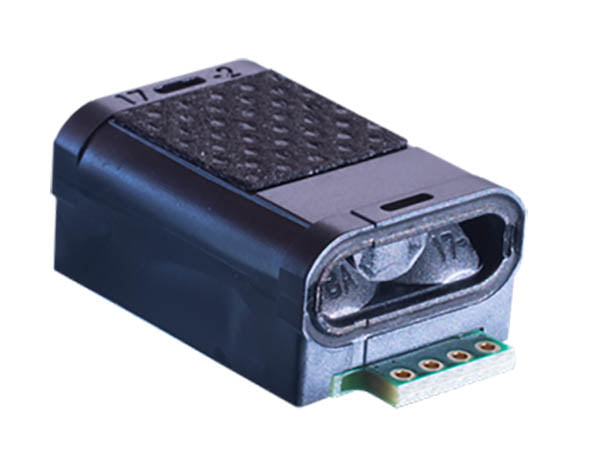
- Measured Gas: Carbon Dioxide
- Operating Principle: Non-dispersive infrared
- Measurement Range (CO2): 400 – 5,000ppm. Extended range 10,000ppm
- Accuracy (CO2): ±30 ppm ±3% of reading 1, 2 (extended range ± 10% of reading)
- Peak Current: <125mA
- Power Supply: 3.05 – 5.5 V 3
- Dimensions: 33.5 x 19.7 x 11.5 mm
- Weight: 5g
- Life Expectancy: >15 years
- Operation Range: 0 – 50°C, 0 – 85%RH
The Senseair Sunrise HVAC is a self-calibrating sensor, meaning you need to worry about it’s accuracy once deployed. INKBIRD’s implementation of the sensor in the IAM-T1 model allows for manual calibration too, if you maybe feel the measurement is inaccurate.
Packaging and Build Quality
The INKBIRD IAM-T1 ships in a high quality branded box with a set of batteries and a user manual. The device is professionally packaged, it leaves a premium feel when you are handling it. It’s size is perfectly adequate for a device of this type, I like that you can simply move it around without hassle.
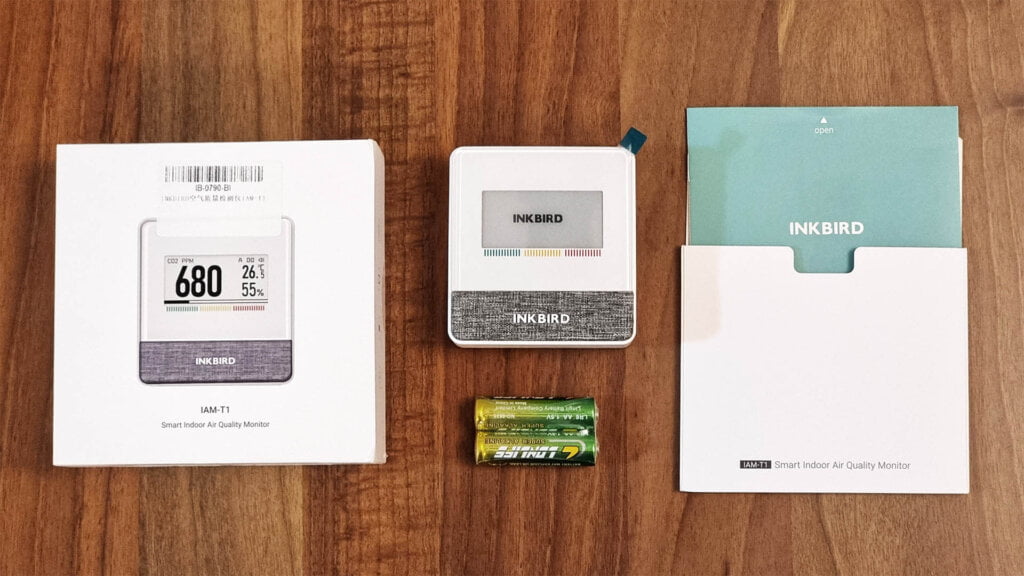
The IAM-T1 is powered by 2xAA batteries, inserted under the back cap. There are two buttons underneath as well, one is used to quickly cycle between °C/°F and the other turns on the Bluetooth connectivity. You can freely use this device without any connection and save battery, this button does that.
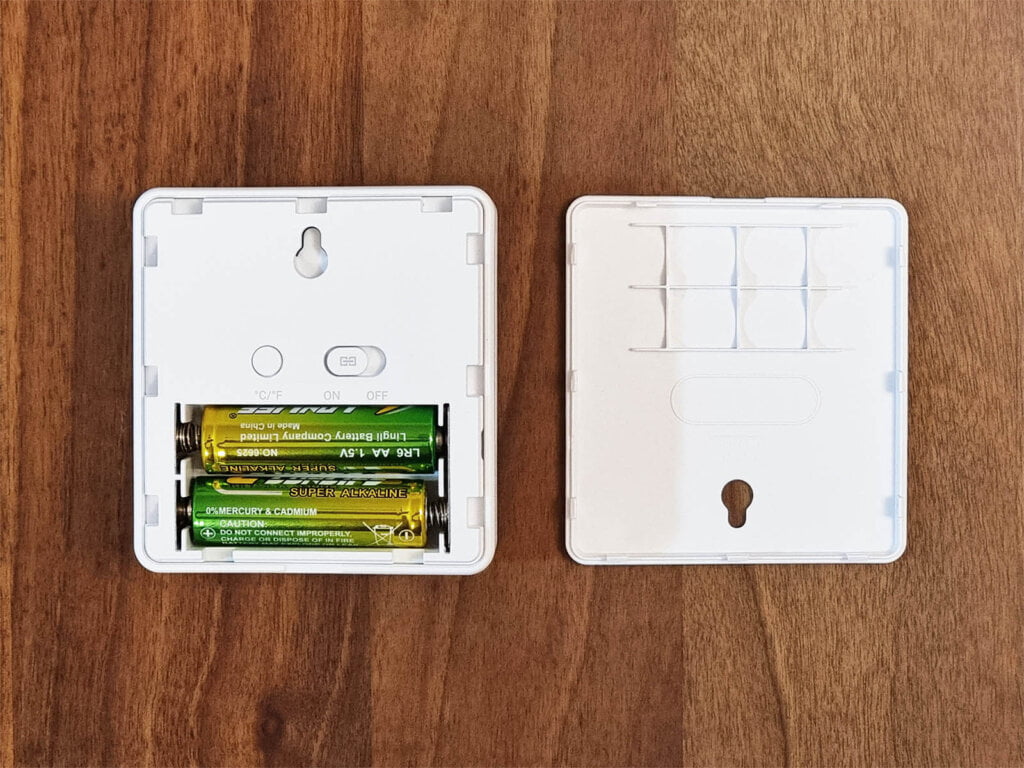
Turning on the device immediately populates the screen with information about your room’s air quality and climate state. The first thing on the screen is the CO2 measurement with big black bolded numbers, followed by the temperature and humidity in the right corner.
Underneath the screen, there is a 3-color indicator bar which is used to give you a sense of current CO2 level in your room. The bar above it on the screen, fills up per your setup in the app (you can customize it) and sounds an alarm when CO2 concertation is high. The preset values by INKBIRD:
- Green
- CO2 level bellow <1000ppm (good)
- Yellow
- CO2 level within 1000-1400ppm (medium)
- Red
- CO2 level above >1400ppm (unhealthy)
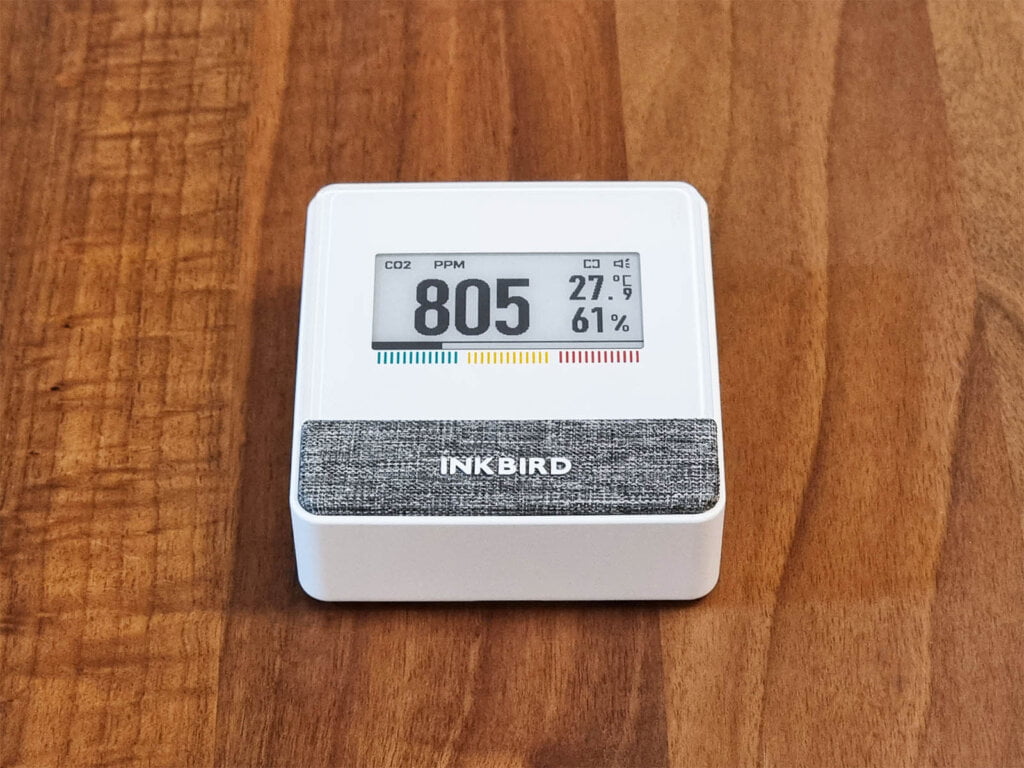
Breathing out near the device immediately increases the CO2 reading, pushing it over 1000ppm. I don’t think a high reporting rate is needed for an air quality sensor, but I do like the fact it reacts immediately to CO2 changes.
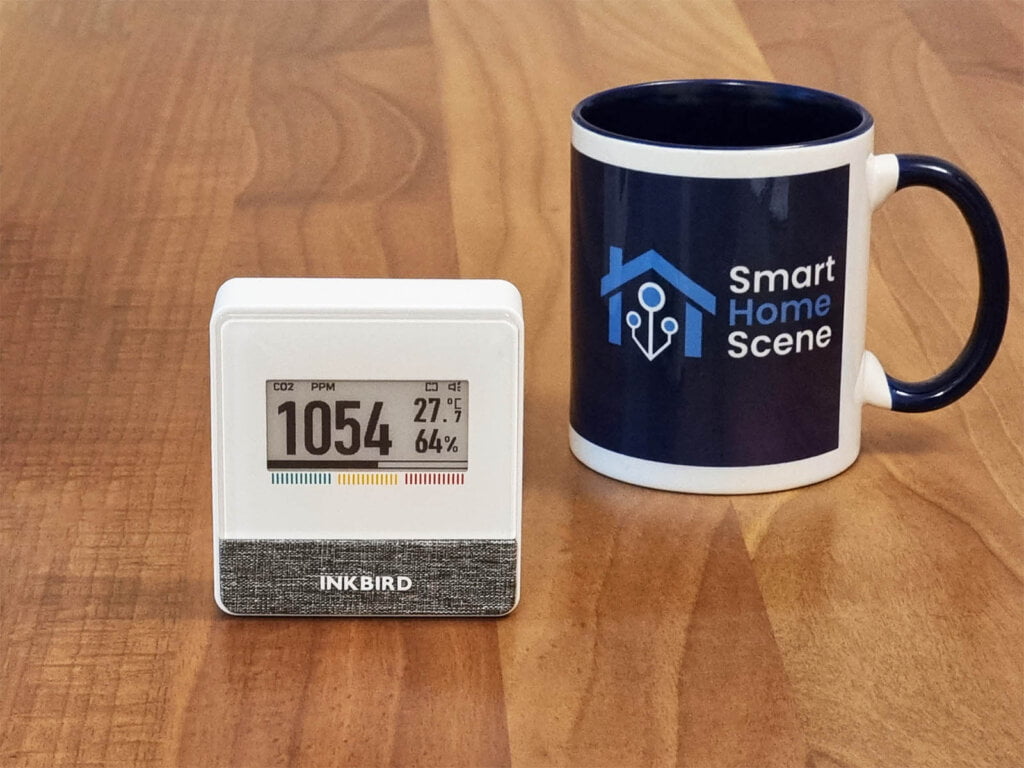
INKBIRD App Usage
Integrating the INKBIRD IAM-T1 Air Quality sensor in their app is simple and streamlined process. Once you toggle the button on the back of the device to turn on Bluetooth, the device gets auto discovered and added to your account. Here’s how the process looks like:
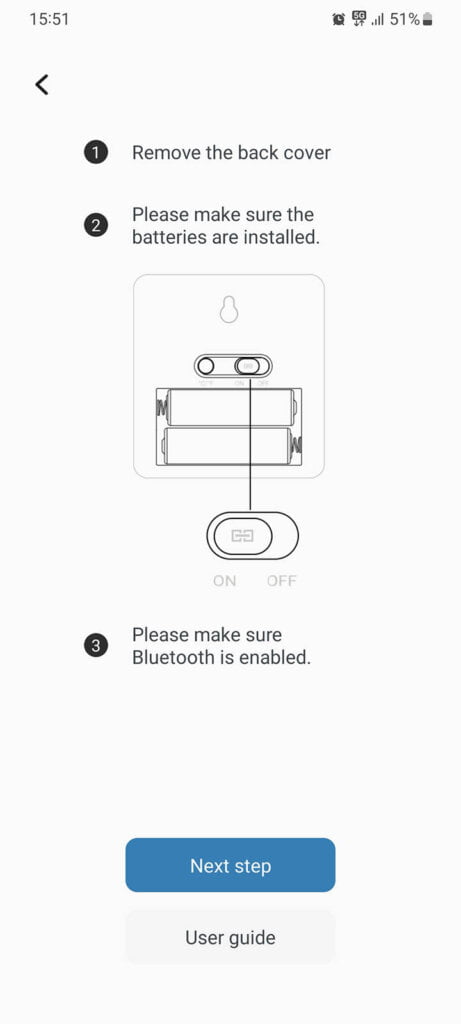
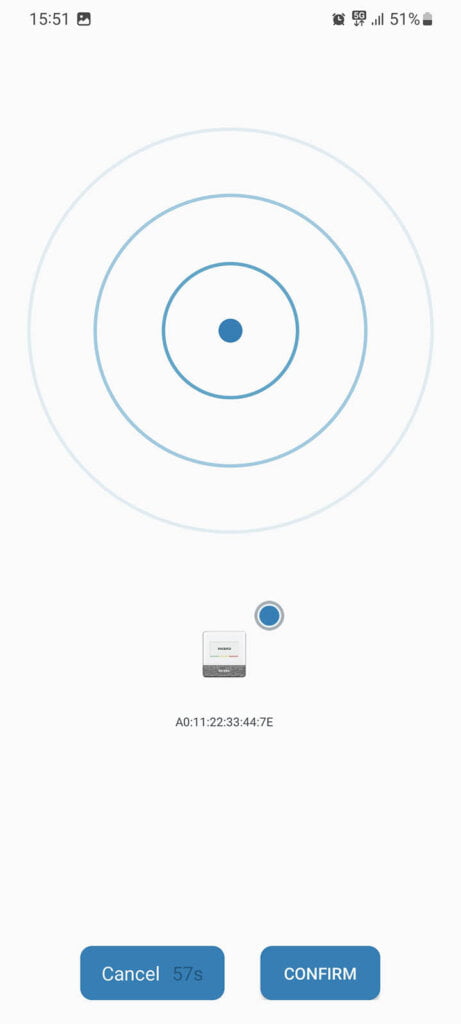

Those who read this blog know I don’t like to use proprietary apps and company software. I believe everything should be local, not dependent on any cloud or account and integratable in Home Assistant.
For those that don’t mind smart home apps, I will note that INKBIRD’s app is smoothly designed with a nice GUI, simple and easy to navigate and offers dark mode. Once the IAM-T1 is added successfully, it gives you the following features and data charts:
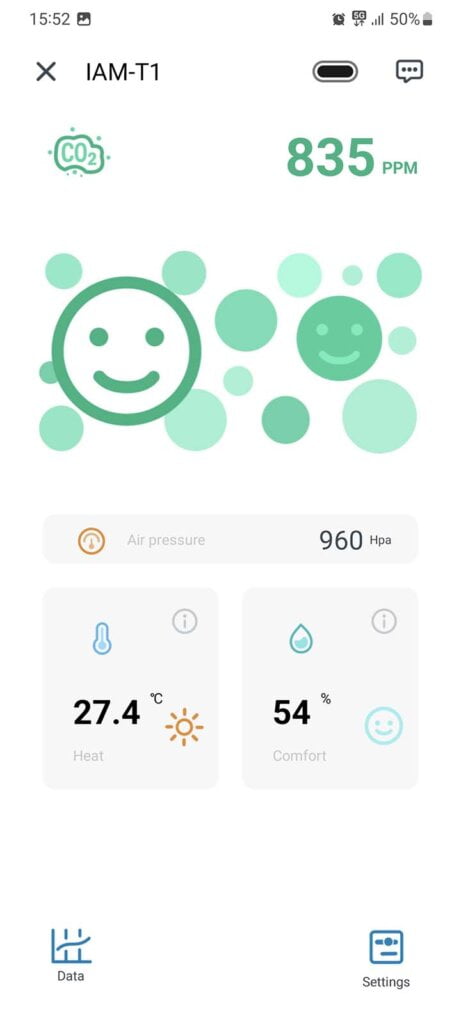
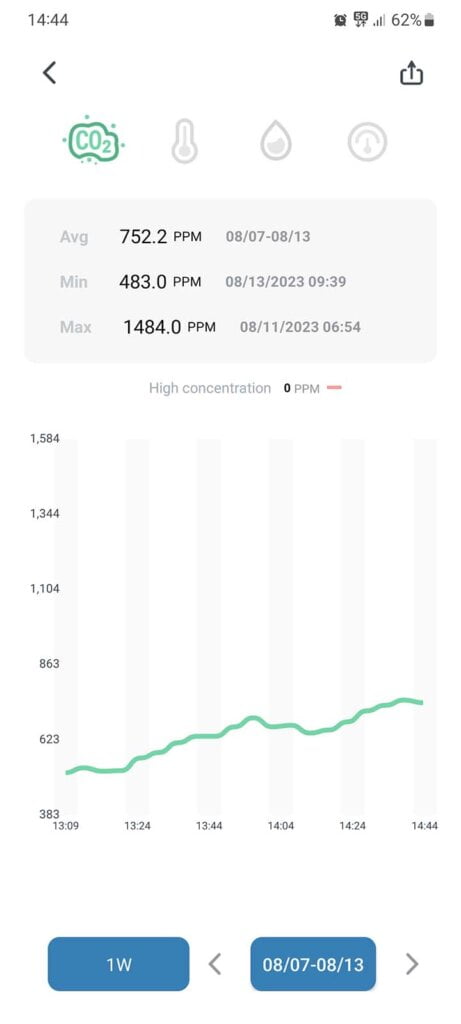
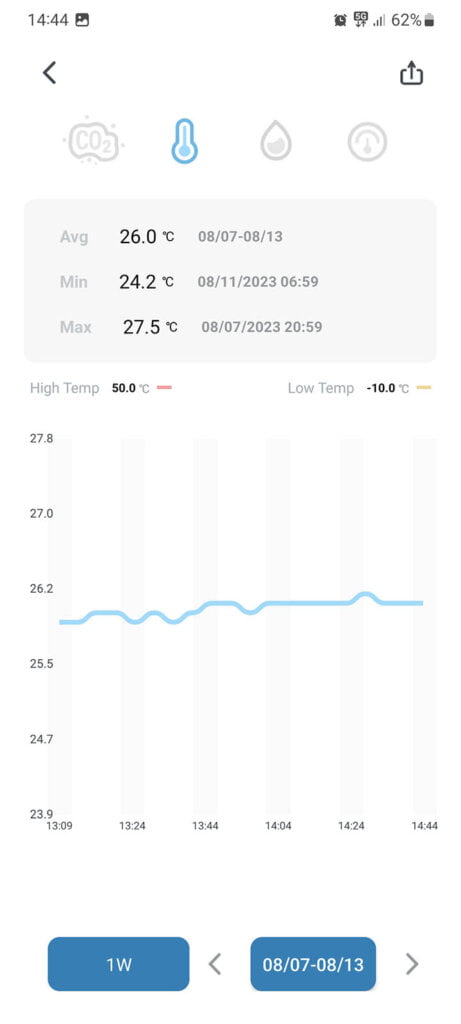
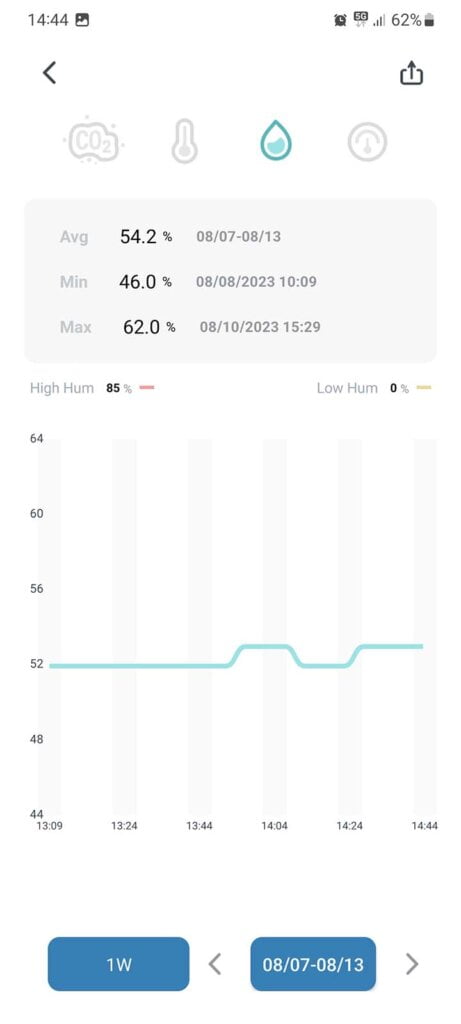
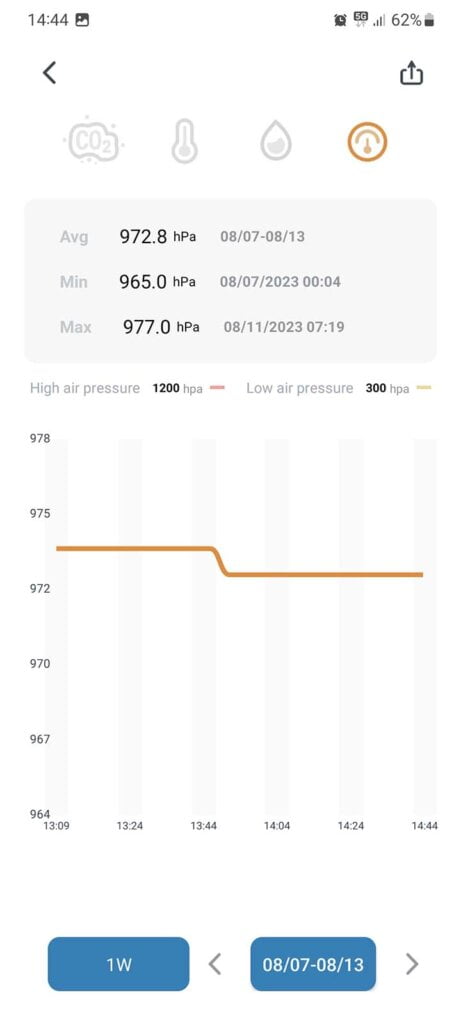
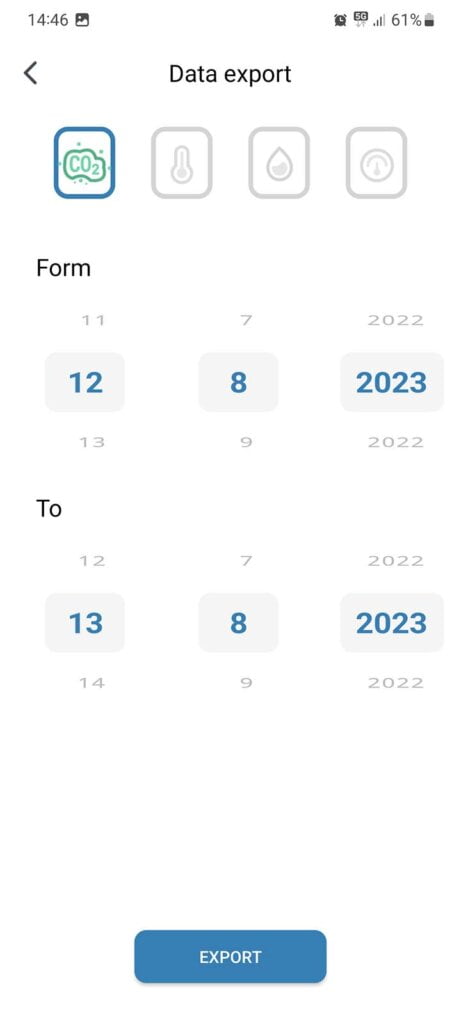
An interesting feature which caught my eye is the ability to export any data the sensor has recorded over a specified period in CSV format. You can use this to analyze and find patterns in your home’s air quality and ambient.
The sensor has alarms which you can preset in the app for CO2, temperature and humidity. This makes the device emit a faint buzzer sound alerting you something has passed your threshold. Just like a traditional CO2 detector, simple and effective.
Home Assistant Integration
The INKBIRD IAM-T1 can be integrated in Home Assistant via ESPHome, check out my article for more details like changing reporting intervals and switching from Celsius to Fahrenheit. Here’s the full ESPHome code you need to flash to an ESP32 board to capture data from the INKBIRD IAM-T1:
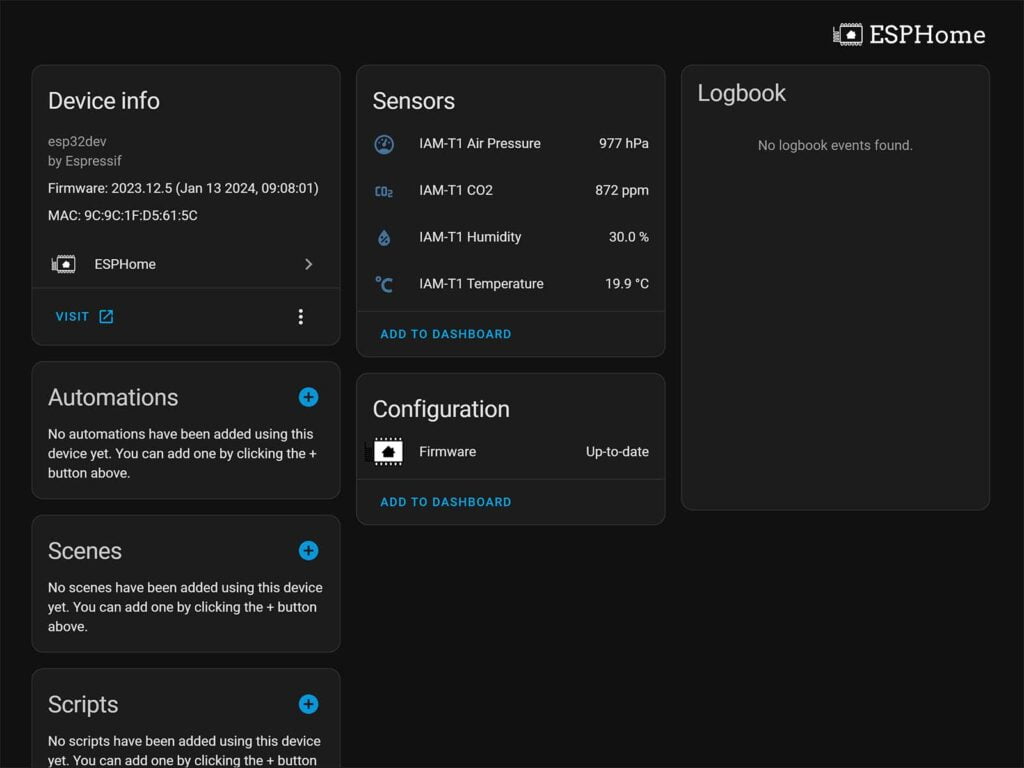
esp32_ble_tracker:
ble_client:
# INKBIRD IAM-T1 MAC Address
- mac_address: A0:11:22:33:44:7E #CHANGE MAC ADDRESS
id: inkbird_iam_t1
sensor:
# Temperature
- platform: ble_client
ble_client_id: inkbird_iam_t1
name: "IAM-T1 Temperature"
device_class: temperature
icon: 'mdi:temperature-celsius'
unit_of_measurement: '°C'
accuracy_decimals: 1
service_uuid: 'ffe0'
characteristic_uuid: 'ffe4'
notify: true
type: characteristic
lambda: |-
uint8_t is_negative = x[4] & 0xF;
uint16_t temp = (x[5] << 8) | x[6];
if (is_negative == 1) {
return -((float)temp) / 10.0;
} else {
return ((float)temp) / 10.0;
}
# Humidity
- platform: ble_client
ble_client_id: inkbird_iam_t1
name: "IAM-T1 Humidity"
device_class: humidity
icon: 'mdi:water-percent'
unit_of_measurement: '%'
accuracy_decimals: 1
service_uuid: 'ffe0'
characteristic_uuid: 'ffe4'
notify: true
type: characteristic
lambda: |-
uint16_t humidity = (x[7] << 8) | x[8];
return ((float)humidity) / 10.0;
# Carbon Dioxide CO2
- platform: ble_client
ble_client_id: inkbird_iam_t1
name: "IAM-T1 CO2"
device_class: carbon_dioxide
icon: 'mdi:molecule-co2'
unit_of_measurement: 'ppm'
accuracy_decimals: 0
service_uuid: 'ffe0'
characteristic_uuid: 'ffe4'
notify: true
type: characteristic
lambda: |-
uint16_t co2 = (x[9] << 8) | x[10];
return (float)co2;
# Air Pressure hPa
- platform: ble_client
ble_client_id: inkbird_iam_t1
name: "IAM-T1 Air Pressure"
device_class: atmospheric_pressure
unit_of_measurement: 'hPa'
accuracy_decimals: 0
icon: 'mdi:gauge'
service_uuid: 'ffe0'
characteristic_uuid: 'ffe4'
notify: true
type: characteristic
lambda: |-
uint16_t pressure = (x[11] << 8) | x[12];
return (float)pressure;Pricing and Availability
The INKBIRD IAM-T1 Air Quality Sensor is available on their official Amazon US, Amazon DE or Amazon UK stores and AliExpress. Like other air quality sensors (Aqara S1 Air Quality, Qingping CGS1), it’s a costly device.
Summary
The INKBIRD IAM-T1 is a capable and accurate air quality monitoring device with an E-Ink display. If you are looking for something that works out of the box, than this is a device for you. However, some things need to be noted and handled better than they are. Here’s a summary of my experience with the INKBIRD IAM-T1:
The Build Quality of the device is excellent, it feels premium and compact when handled. The mesh screens on the sides allow for better air circulation and thus more accurate measurements.
The E-Ink Display has excellent viewing angles from all sides, allowing the user to glance the information on the screen from a distance.
The Senseair Sunrise HVAC Sensor is a next-generation NDIR CO2 sensor with a life expectancy of more than 15 years.
The Batteries are common and easy to replace, with INKBIRD promising a whopping 4 year battery life on a good set of AAs.
The App is easy and intuitive to use, however limiting the device to only the INKBIRD app is a serious drawback of the IAM-T1. ESPHome Integration is possible, although requires work.
The Price is a bit high, taking into account the device does not measure airborne particulate matter (PM).
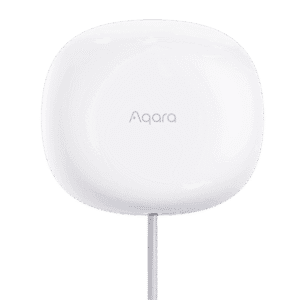
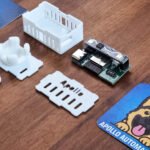

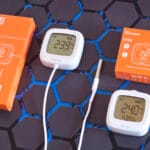
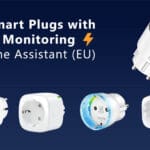
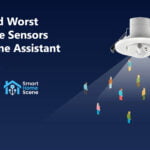

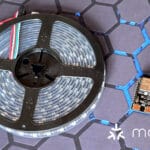

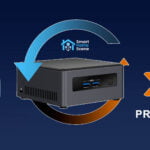
Thank you for this! I bought one because of your recommendation. My only fear is that I can’t get the data into HA. Hopefully there is a solution soon
Any progress on decoding the BLE data?
Yes, I just released an article detailing the ESPHome integration:
https://smarthomescene.com/guides/how-to-integrate-inkbird-iam-t1-air-quality-monitor-in-home-assistant/